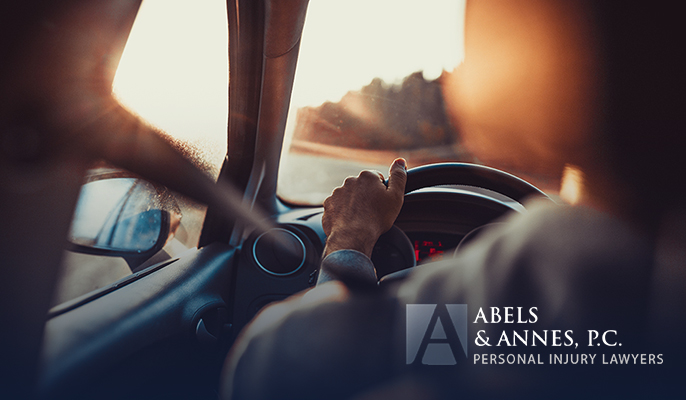Road rash is a common type of injury among motorcycle riders who get into accidents. This injury can be painful, unpleasant, or even deadly, depending on its severity. If left untreated, road rash can cause a lifetime of physical pain, emotional suffering, and mental anguish.
It is not uncommon for road rash arising from motorcycle accidents to cause permanent scarring, disfigurement, and disabilities, which can dramatically impact the victim’s life. Injured motorcycle riders often need a skilled attorney on their side to obtain fair compensation for the economic and non-economic impacts of road rash.
An experienced motorcycle accident attorney will fight for maximum compensation in your case to ensure that you receive an adequate amount of money to cover all your medical bills, loss of income, and other damages.
What Is Road Rash?
The term “road rash” refers to an abrasion caused by the contact between a victim’s skin and the pavement. According to the American College of Surgeons, an abrasion occurs when a person’s skin is “rubbed away.” In motorcycle accidents, road rash and abrasion injuries can result from a friction burn that happens when part of the victim’s skin rubs off.
Road rash is often referred to as “raspberries” for its red appearance. This type of abrasion injury is one of the most common injuries among motorcycle riders and passengers who fall off or get thrown from their bikes in the event of an accident.
The severity of road rash depends on the amount of protective clothing in the rider’s body.
Which Body Parts Are More Vulnerable to Road Rash?
Road rash occurs any time there is friction against exposed areas of skin when the body makes contact with the ground.
The most common body parts that are more vulnerable to road rash include:
- Elbows
- Knees
- Thighs
- Lower legs
- Arms
- Shoulders
- Palms
- Face
- Back
Road rash is more common in the spring and summer when motorcyclists are less likely to wear layers of clothing to protect them from abrasion injuries if the rider hits the pavement.
Types of Motorcycle Road Rash
Road rash is one of the most common injuries suffered by motorcycle riders and passengers as well as bicyclists and pedestrians hit by motor vehicles.
Road rash can fall into three categories. In some cases, a victim may experience two or even three types of road rash at once.
The three types of road rash suffered by victims of motorcycle accidents include:
- Avulsion. An avulsion, the most common type of road rash, involves forcefully tearing away the skin. This type of road rash happens when the outer layer of the victim’s skin strips away.
- Open wound. When an abrasion causes an open wound, the victim requires immediate medical attention to stop bleeding and reduce the risk of infection. The injured person might require stitches, skin grafts, or even plastic surgery to treat an open wound caused by road rash.
- Compression. A part of a motorcycle rider’s body may be trapped between two objects when a collision occurs. This may result in compression, which can also cause severe bruising or broken bones.
No matter what type of road rash you suffered as a victim of a motorcycle accident, you might have a right to seek reimbursement for the costs and expenses associated with your medical treatment and obtain compensation for other losses.
Degrees of Motorcycle Road Rash
Similar to burn injuries, doctors classify road rash based on the depth of the injury. In terms of the depth of the injury, road rash can be mild or severe.
The three degrees of road rash are:
- First-degree. Minor damage to the skin from a motorcycle accident may involve scrapes, bruising, and/or reddened and irritated skin. First-degree road rash occurs when the outer layer of the skin is damaged.
- Second-degree. If an abrasion breaks the victim’s skin and causes damage to the inner layer of the skin, this type of injury is a second-degree road rash. The underlying layer of the skin remains intact.
- Third-degree. The most painful and dangerous type of road rash is when the underlying layer of the skin sustains damage. When a victim suffers a deep wound, it can expose their tendons, muscles, nerves, or even bone. Often, surgery is necessary to treat third-degree road rash.
Regardless of its degree, road rash can be extremely painful and difficult to treat. Abrasions and damage to the skin resulting from the friction of the skin against the pavement often leave temporary or permanent scarring.
Symptoms of Road Rash and Infection
When a motorcycle accident victim experiences road rash, the area of the skin that scraped off on a hard surface such as pavement may get red and inflamed. Road rash is sometimes called “raspberries” or “strawberries” because of its red appearance.
Depending on the type and severity of the road rash injury, road rash symptoms may also include swelling and bleeding in the affected area immediately after the collision. There is also a possibility of infection if road rash does not receive immediate treatment.
That is why people who experience road rash in a motorcycle crash should watch out for the signs of infection.
According to the Centers for Disease Control and Prevention (CDC), symptoms of infection include:
- Soreness, redness, or swelling in the damaged area of the skin
- Vomiting
- Fever
- Diarrhea
- Shortness of breath
- Pain in the abdomen
- Unexplained chills and sweats
- Increased urination
If you notice any of these or other signs of infection following a motorcycle accident, visit an emergency room or see a doctor as soon as possible.
Physical Complications from Motorcycle Road Rash
Road rash following a motorcycle accident is associated with several physical complications.
Some of the most serious complications from road rash include:
- Scarring. Often, road rash leaves scarring. The affected areas of the skin may become raised, bumpy, and tighter than before the accident. Depending on the type and severity of the road rash injury, scarring may fade away over time. In some cases, scars can be permanent.
- Infections. If the wound is not cleaned and treated properly after the motorcycle accident, it could become infected. If left untreated, an infection can spread into vital organs and result in organ failure or even death.
The best way to prevent or minimize physical complications arising from road rash is to seek medical attention as soon as possible to get your wounds treated by professionals.
When Should You Seek Medical Attention for Road Rash?
If you were in a motorcycle accident and suffered road rash injuries or any damage to the skin, consider receiving medical care right away. It is important to seek medical attention as soon as possible to reduce the risk of infection and start the necessary treatment to minimize scarring and other complications.
While it is a good idea to see a doctor after a motorcycle accident, even if your injuries seem minor, going to a hospital becomes critical if:
- Your wound does not stop bleeding
- You can see exposed muscles, tendons, nerves, or bones
- You see extreme redness or swelling in the damaged area of the skin
- Road rash covers a large area of the skin
- You can see glass, rocks, dirt, pieces of metal, or other debris in the wound
- You notice any signs of infection (see the list of infection symptoms above)
If you were diagnosed with first- or second-degree road rash after a motorcycle accident, your injury might heal over time with minimum to no treatment.
However, if you notice any of the following complications during the recovery, do not hesitate to see a doctor:
- Your wound stopped healing
- Brown or yellow pus is coming from the wound
- The pain does not subside
- You can smell a bad odor from the wound
- You developed a fever or other signs of infection
Treating road rash may require extensive treatment, the use of medication, or even surgery, depending on the severity and degree of the injury. However, if the motorcycle accident was not your fault, you might be able to pursue compensation for your medical expenses and other losses associated with the road rash injury.
Psychological and Emotional Complications from Motorcycle Road Rash
While road rash is generally less severe than other motorcycle accident injuries such as traumatic brain injury (TBI), road rash is often associated with devastating psychological and emotional complications.
Most of the non-physical complications are the result of extreme pain and permanent scarring. Altered appearance, disfigurement, or permanent scarring in visible areas of the skin can dramatically impact the victim’s self-confidence and quality of life.
It is not uncommon for victims of motorcycle accidents to suffer from emotional and psychological trauma because of the way they look after the crash.
Some of the most common psychological and emotional complications from road rash include:
- Depression. Visible damage to the skin can affect the person’s quality and enjoyment of life. Victims are more likely to become depressed and isolate themselves from social activities when their self-confidence takes a hit.
- Anxiety. Victims of motorcycle accidents may develop anxiety and feel constant stress every time they look in the mirror, and their injuries remind them of the accident.
- Ongoing discomfort and pain. Treating road rash is a long process that may require plastic surgery. Thus, a person who suffered road rash may experience ongoing discomfort and pain for the duration of the treatment.
The psychological and emotional complications can be just as severe as physical ones. That is why victims of motorcycle accidents who suffered road rash are entitled to compensation for all the pain, suffering, distress, and other non-monetary damages they experience because of their injuries.
Frequently Asked Questions (FAQs) About Motorcycle Road Rash
What causes road rash in motorcycle collisions?
According to the Arizona Department of Public Safety, the leading cause of motorcycle accidents across Arizona is speed. Speeding-related motorcycle crashes can result in severe road rash.
The speed at which the skin makes contact with the pavement will determine the severity and degree of road rash. This type of injury happens due to the contact that the skin makes with the road surface. A motorcycle rider or passenger may suffer road rash in collisions involving other vehicles or single-vehicle accidents (e.g., the rider falls off the bike).
How is road rash treated after a motorcycle accident?
Seeking medical attention immediately after the accident can prevent or reduce the risk of infection, scarring, and other complications. A doctor will prescribe the appropriate treatment based on the severity and nature of the injury. Some road rash injuries require injuries.
Treatment for road rash can be costly, painful, and long. Affected areas of the skin may not heal for months or even years. In some cases, road rash leaves scars for the rest of the victim’s life. If you were involved in a motorcycle collision and your skin sustained damage or scraped off, do not hesitate to receive medical care right away.
Can you seek financial compensation for your motorcycle road rash?
If your motorcycle accident was the result of someone else’s fault, you might be entitled to financial compensation for your medical expenses and other losses incurred after the crash. As a victim of someone else’s negligence, you may be able to pursue financial compensation for the hospital bills, surgery costs, and other medical expenses related to your road rash injury.
As part of compensation for road rash, you may also recover lost wages from missing time from work. Financial compensation for a road rash injury may also include compensation for your emotional distress, suffering, pain, loss of enjoyment of life, and other non-economic and intangible losses.
How can a motorcycle accident attorney help?

If you suffered a road rash in a motorcycle accident, you might want to consider hiring an experienced attorney to investigate your case and help you pursue the compensation to which you are entitled. If the other party involved in the accident was at fault, your attorney would protect your rights throughout the negotiation, settlement, and litigation process.


